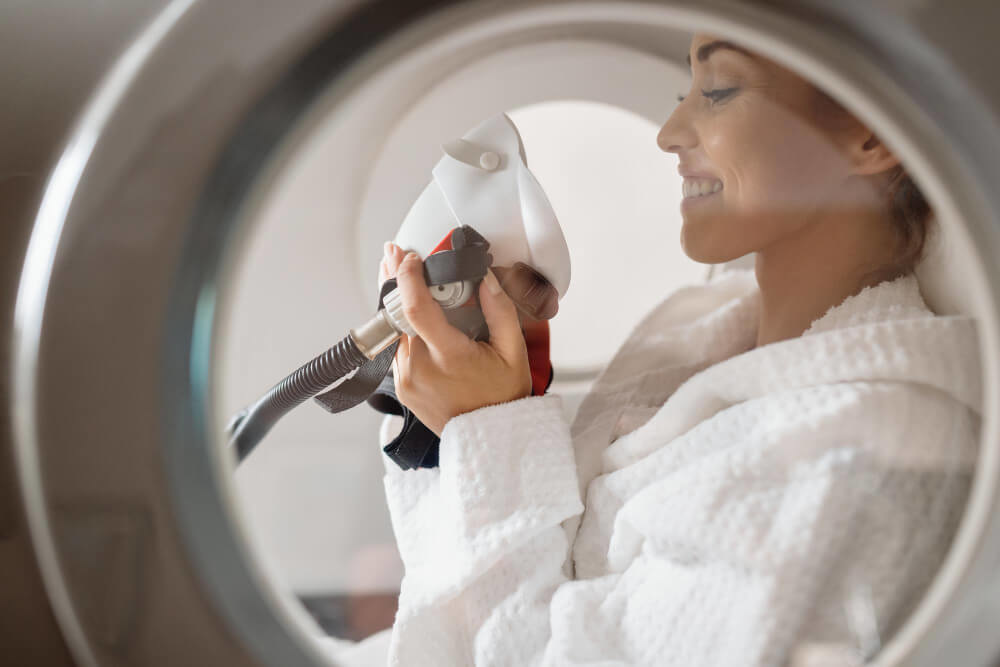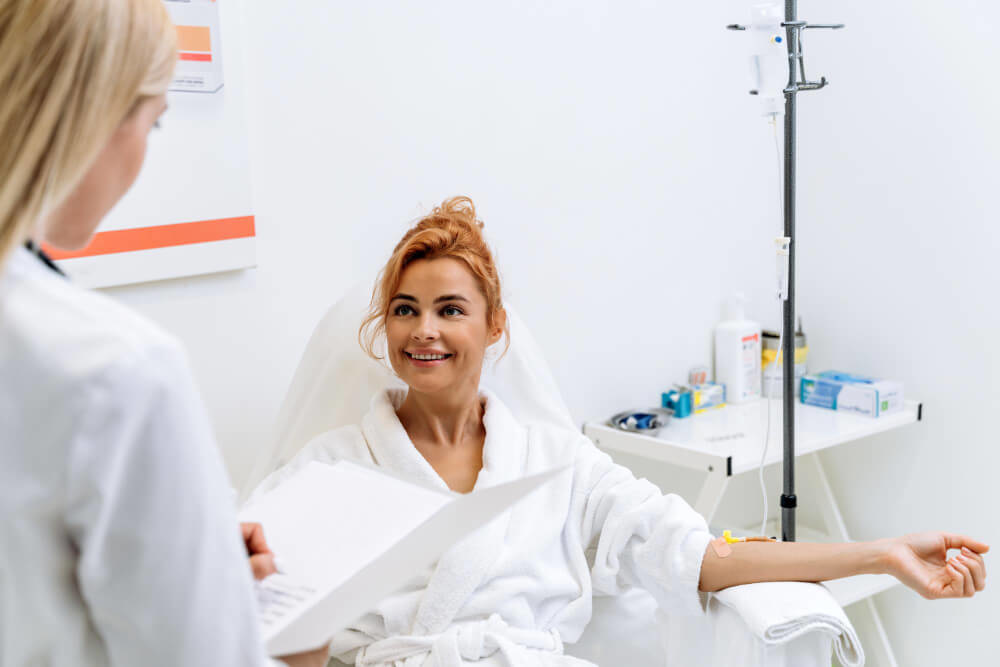Navigating the Change: A Complete Guide to Menopause Training and Exercise
Menopause is an inevitable and natural biological transition that every woman will experience. Yet, for something so universal, it remains shrouded in mystery, misinformation, and often, silence. This profound hormonal shift can bring a cascade of physical, mental, and emotional symptoms that can significantly impact quality of life. For too long, the narrative has been one of enduring, rather than managing, this important life stage.
But the conversation is changing. A new understanding is emerging, one that reframes menopause not as an end, but as a new beginning that can be navigated with vitality and strength. This modern approach hinges on a crucial, two-pronged concept of ‘menopause training’. This includes both the essential, specialized education for healthcare professionals and the targeted physical training that empowers women to take control of their health. Comprehensive menopause training for clinicians is the bedrock of better patient care, ensuring that women receive the sophisticated support they deserve.
This guide will explore both facets of this vital training. We will delve into why expert medical guidance is non-negotiable and how physical exercise becomes one of the most powerful tools in a woman’s arsenal. By understanding the changes happening within your body and learning how to adapt your lifestyle, you can not only manage symptoms but also lay a foundation for long-term health and wellness.

Why is Menopause So Misunderstood?
For decades, women’s health has been significantly under-researched, and menopause is a prime example of this neglect. Many symptoms that are now clearly linked to perimenopause and menopause were historically dismissed as signs of aging, stress, or even psychological issues. This has led to generations of women suffering in silence, unaware that their experiences were part of a recognized physiological process.
The list of potential symptoms is extensive and goes far beyond the commonly known hot flashes and night sweats. It includes debilitating brain fog, memory lapses, anxiety, depression, joint pain, vaginal dryness, sleep disturbances, and a loss of libido. When a woman presents these varied symptoms to a clinician not versed in the nuances of menopause, the dots often fail to connect.
This gap in knowledge is not a failing of individual doctors but a systemic issue within medical education. The complexity of hormonal fluctuations and their body-wide impact requires specific, dedicated training that has historically been absent from many medical school curricula. The result is a healthcare system that is often ill-equipped to provide effective, empathetic, and timely care for the millions of women navigating this transition.
This is precisely why a new standard of care is not just beneficial; it’s absolutely necessary. Women deserve healthcare providers who can confidently diagnose, manage, and treat menopausal symptoms with a deep understanding of the underlying hormonal and physiological changes. This empowers patients, validating their experiences and providing them with a clear path forward.

What Does Modern Menopause Care Look Like?
The tide is turning away from a simplistic, one-size-fits-all approach to menopause management. The future of effective care is personalized, holistic, and proactive. It recognizes that every woman’s journey through menopause is unique, shaped by her genetics, lifestyle, and overall health history. A modern approach looks beyond just prescribing hormone therapy and considers the entire ecosystem of a woman’s well-being.
This holistic view integrates multiple pillars of health. It involves a sophisticated understanding of hormone replacement therapy (HRT), including different types, dosages, and delivery methods. It also places immense value on lifestyle interventions such as nutrition, stress management techniques, sleep hygiene, and, of course, targeted physical exercise. The goal is to create a comprehensive strategy that addresses not just the immediate symptoms but also the long-term health risks associated with the post-menopausal years, such as osteoporosis and cardiovascular disease.

Why is specialized training for doctors crucial?
General practitioners are on the front lines of women’s health, yet many report feeling underprepared to manage the complexities of menopause. Standard medical training often provides only a cursory overview, leaving significant gaps in knowledge about symptom diagnosis, the latest HRT evidence, and non-hormonal treatment options. This is where dedicated professional development becomes invaluable. Specialized programs provide the in-depth knowledge needed to confidently support patients. This is why a focus on menopause specialist training for GPs is a critical step toward improving health outcomes on a massive scale.

How does personalization improve patient outcomes?
Personalized medicine is revolutionizing healthcare, and menopause management is a perfect application of its principles. Instead of relying on population averages, clinicians can now leverage advanced tools to tailor treatments to an individual’s unique biological makeup. This approach leads to more effective treatments with fewer side effects. A key part of this is understanding the role of genomics in personalized patient treatment, which can offer insights into how a woman might metabolize certain hormones or her predisposition to specific health conditions, allowing for a truly bespoke care plan.

What about complex cases like breast cancer survivors?
Certain patient populations require an even greater level of specialized knowledge. For women with a history of hormone-sensitive cancers, such as breast cancer, standard HRT is often contraindicated. These women still experience the full spectrum of menopausal symptoms, often more intensely due to treatments like chemotherapy or tamoxifen. Navigating their care requires a deep understanding of the risks and benefits of various non-hormonal therapies and lifestyle strategies. Effectively managing menopause in patients with a history of breast cancer is a delicate balance that highlights the absolute necessity of expert-level training for healthcare providers.

How Does Menopause Change Your Body?
To understand why a specific type of physical training is so beneficial during menopause, it’s essential to first grasp the profound physiological shifts occurring within the body. The primary driver of these changes is the decline in key hormones, most notably estrogen, but also progesterone and testosterone.
Estrogen is a powerful hormone with receptors throughout the body, which is why its decline has such a wide-ranging impact. One of its most critical roles is in maintaining bone density. As estrogen levels fall, the rate of bone breakdown begins to outpace the rate of bone formation, leading to a condition called osteopenia and, if left unchecked, osteoporosis. This makes bones more brittle and susceptible to fractures.
This hormonal shift also affects body composition. Many women notice an increase in body fat, particularly visceral fat, which is the dangerous fat that accumulates around the internal organs. Simultaneously, there is a natural decline in muscle mass, a condition known as sarcopenia. This combination of less muscle and more fat can slow down metabolism, making weight management more challenging and increasing the risk for metabolic syndrome and type 2 diabetes.
Furthermore, estrogen plays a protective role in cardiovascular health. It helps keep blood vessels flexible and manages cholesterol levels. Its decline is associated with an increased risk of heart disease, making heart health a primary concern for post-menopausal women. The brain is also rich in estrogen receptors, which helps explain why so many women experience cognitive symptoms like brain fog and memory issues during this transition.

Why is Exercise a Non-Negotiable During Menopause?
If the hormonal changes of menopause represent the problem, then targeted exercise is one of the most powerful and accessible parts of the solution. It is not simply about ‘staying in shape’; it is a potent medical intervention that directly counteracts many of the negative physiological changes that occur during this time. Regular physical activity is a non-negotiable tool for health, longevity, and quality of life.
Exercise directly addresses the biggest health risks associated with menopause. For bone health, weight-bearing and resistance exercises send signals to your bones to lay down new tissue, helping to slow or even reverse bone density loss. This is your number one defense against osteoporosis and debilitating fractures later in life.
For body composition, strength training is crucial for combating sarcopenia. By building and maintaining lean muscle mass, you are effectively boosting your metabolism. More muscle means your body burns more calories at rest, which helps to fend off the accumulation of visceral fat and supports healthy weight management.
From a cardiovascular standpoint, aerobic exercise strengthens your heart muscle, improves circulation, and helps manage blood pressure and cholesterol levels. It directly mitigates the increased risk of heart disease that comes with the loss of estrogen’s protective effects. Beyond these physical benefits, the impact on mental well-being is profound. Exercise is a proven mood booster, releasing endorphins that can alleviate anxiety and symptoms of depression. It can also significantly improve sleep quality, a common complaint for menopausal women.

What is the Best Kind of Menopause Training for Your Body?
There is no single ‘best’ exercise for menopause. Rather, the most effective approach is a well-rounded routine that incorporates different types of training to address the full spectrum of changes your body is undergoing. The ideal fitness plan combines strength training, cardiovascular exercise, and activities that improve flexibility and balance. The key is consistency and finding activities you genuinely enjoy.

How can strength training help?
Strength or resistance training is arguably the most important component of a menopausal fitness plan. It is the single most effective way to combat the dual threats of muscle loss and bone density decline. By putting your muscles under load, you stimulate them to grow stronger and trigger the bone-remodeling process.
This doesn’t mean you have to become a bodybuilder. Strength training can include using free weights, weight machines, resistance bands, or even just your own body weight with exercises like squats, push-ups, and lunges. Aiming for two to three sessions per week is a fantastic goal. If you’re new to this, learning the fundamentals of how to exercise through menopause can provide a solid foundation for building a safe and effective routine.

What about cardiovascular exercise?
Cardiovascular or aerobic exercise is essential for heart health, weight management, and mental well-being. It strengthens your heart and lungs, improves your body’s ability to use oxygen, and burns calories. The beauty of cardio is the sheer variety of options available.
You can choose from moderate-intensity activities like brisk walking, cycling, or swimming. Alternatively, you might explore high-intensity interval training (HIIT), which involves short bursts of all-out effort followed by brief recovery periods. HIIT is particularly effective at improving cardiovascular fitness and insulin sensitivity in a shorter amount of time. Finding the best exercises to do during menopause often involves mixing different types of cardio to keep things interesting and challenge your body in new ways.

Is flexibility and balance training important?
Yes, absolutely. As we age, maintaining flexibility and balance becomes increasingly important for preventing injuries and falls. The risk of fractures from falls is significantly higher in women with osteoporosis, making balance work a critical part of a preventative health strategy. Activities like yoga and Pilates are excellent choices as they often combine strength, flexibility, and balance in a single session.
These practices also have the added benefit of promoting mindfulness and reducing stress, which can help manage the emotional rollercoaster that sometimes accompanies menopause. Simple stretching after every workout can also improve your range of motion and reduce muscle soreness. A comprehensive approach to exercise and menopause always includes this vital component for functional, real-world fitness.

How can I stay motivated and consistent?
Starting a new exercise routine is one thing; sticking with it is another. The key to long-term success is to build a sustainable habit. Start slowly, especially if you’ve been inactive for a while. It’s better to do a 15-minute workout consistently than to overdo it once and be too sore to move for a week.
Find an activity you truly enjoy. If you hate running, don’t force it. Try a dance class, hiking, or swimming instead. Listen to your body. Menopausal bodies can be less resilient to high stress, including exercise-induced stress. Some days you might have the energy for a high-intensity workout, while on other days, a gentle walk or stretching session is what your body needs. Embracing this flexibility is key to avoiding burnout and injury. It is helpful to remember that you are not just exercising for today; you are investing in your future, and these getting fit for life tips for healthy aging can help you build a lifelong habit of movement.

How Can You Build a Holistic Menopause Plan?
True wellness during menopause comes from a synergistic approach that combines expert medical guidance with proactive personal choices. Your physical training regimen, while incredibly powerful, is most effective when it’s part of a larger, holistic strategy. This means creating a partnership with a knowledgeable healthcare provider and paying close attention to other pillars of health.
Think of it as a team effort. Your doctor, armed with specialized menopause training, can provide the personalized medical strategy, including potential hormone therapies and health screenings. Your role is to be the CEO of your own body, implementing the lifestyle changes that will support that medical plan. This includes your exercise routine, but also your nutrition, stress levels, and sleep habits.
Nutrition plays a vital role. Focusing on a diet rich in protein supports muscle synthesis, while adequate calcium and vitamin D are crucial for bone health. Managing stress is also key, as high levels of the stress hormone cortisol can exacerbate symptoms like weight gain and poor sleep. Finally, prioritizing sleep hygiene allows your body the restorative time it needs to recover and repair, a process that is essential for both physical and mental resilience.
By weaving these elements together, you create a powerful, multi-faceted plan that addresses menopause from all angles. It is this integrated approach that allows women to not just get through menopause, but to truly thrive during this new chapter of life. It’s about taking control, feeling empowered, and building a foundation of health that will serve you for decades to come.
Frequently Asked Questions

Will my menopause symptoms come back if I stop taking MHT?
It is possible for menopausal symptoms, such as hot flashes, night sweats, and mood changes, to return after de-prescribing MHT. The likelihood and intensity of this recurrence vary significantly among individuals and can be influenced by how you stop the treatment. Stopping MHT abruptly is more likely to trigger a return of symptoms than a gradual, tapered approach.
If symptoms do reappear, they are often less severe than they were before you started therapy and may resolve on their own within a few months as your body readjusts. However, if the returning symptoms significantly impact your quality of life, it is important to consult your doctor. You can discuss the possibility of restarting MHT at the lowest effective dose or explore effective non-hormonal alternatives.

Is it better to stop MHT gradually or all at once?
While there is no single method that is right for everyone, healthcare providers often recommend a gradual tapering-down process when de-prescribing MHT. Tapering involves slowly decreasing the dose or the frequency of your medication over several weeks or months. This method gives your body time to adapt to the lower hormone levels, which can help minimize the withdrawal effects and reduce the chance of a sudden return of severe symptoms.
The decision to taper or stop abruptly should be a shared one between you and your healthcare provider. Factors such as your current dose, how long you’ve been on MHT, and your personal medical history will influence the best strategy for you. A structured, gradual plan allows for monitoring and adjustment, offering a more controlled and comfortable transition off the medication.

Are there long-term risks that make stopping MHT necessary after a certain age?
There is no universal "cut-off" age where stopping MHT becomes mandatory, as modern guidelines emphasize individualized care. However, the risk-benefit profile of continuing MHT can change as you get older, which is why annual reviews with your doctor are essential. For some individuals, long-term use beyond age 60 can be associated with a small but increased risk of certain health conditions, such as breast cancer or stroke, depending on the type of MHT used.
The decision to de-prescribe is based on a careful evaluation of these potential risks against the ongoing benefits, such as symptom control and bone protection. If you are healthy and your symptoms are well-managed on a low dose, your doctor may determine that the quality-of-life benefits still outweigh the potential risks. Ultimately, the choice to continue or stop is a personal one, made in close consultation with your provider.
Discover the most comprehensive functional medicine training, longevity training, and biohacking certification programs designed specifically for healthcare professionals, medics, and clinic owners who want to master regenerative medicine protocols and anti-aging therapies. Learn more at Talking Longevity.







